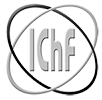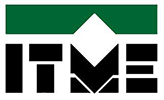Top ranked Nano Energy journal (IF: 15.46) publishes paper authored by Maciej Haras Ph.D. Eng. and prof. Tomasz Skotnicki !

Haras, M. Markiewicz, S. Monfray, and T. Skotnicki, “Pulse mode of operation – A new booster of TEG, improving power up to X2.7 – to better fit IoT requirements”, Nano Energy, p. 104204, Oct. 2019, doi: http://dx.doi.org/10.1016/j.nanoen.2019.104204.
Internet of Things (IoT) becomes nowadays the main driver of digital industry, marking unprecedented growth rate and outnumbering X7 human population. Astonishingly, the expansion of the IoT market could be even bigger if only provide attractive alternatives for battery of wire supply.
Energy Harvesting (EH) would offer huge relief to the IoT offering:
– energy autonomous nodes;
– systems and networks easy to modify;
– supply via renewable source of energy.
Among numerous EH techniques thermoelectricity is an intuitive candidate for the IoT owing to:
-omnipresent heat losses;
– silent, vibrationless, extremely reliable and direct conversion;
– easily adaptable DC output etc. etc.
However, due to the fact that thermoelectricity requires materials integrating antagonistic properties – crystal-like current conduction and glass-like heat insulation – leading to compounds which are:
– expensive;
– industrially incompatible;
– toxic; (iv) harmful.
Moreover, unattractively low conversion efficiency limited application of thermoelectricity only to niche and sophisticated applications.
In this light, improvement of thermoelectric generators performance, has a strategic importance for further expansion of the IoT market. Published paper presents power boost via cyclic disconnecting/connecting the generator to the heat source. This method leads to a significant increase of effective temperature drop across the generator which is reflected in the output energy increase. The energy boost close to X3, comparing with the conventional mode of operation in the same thermal conditions, is experimentally demonstrated. Owing to that, thermoelectrically supplied IoT nodes can be more popularized on the market.
Paper availaible in the Open Access under link: https://www.sciencedirect.com/science/article/pii/S2211285519309115#















